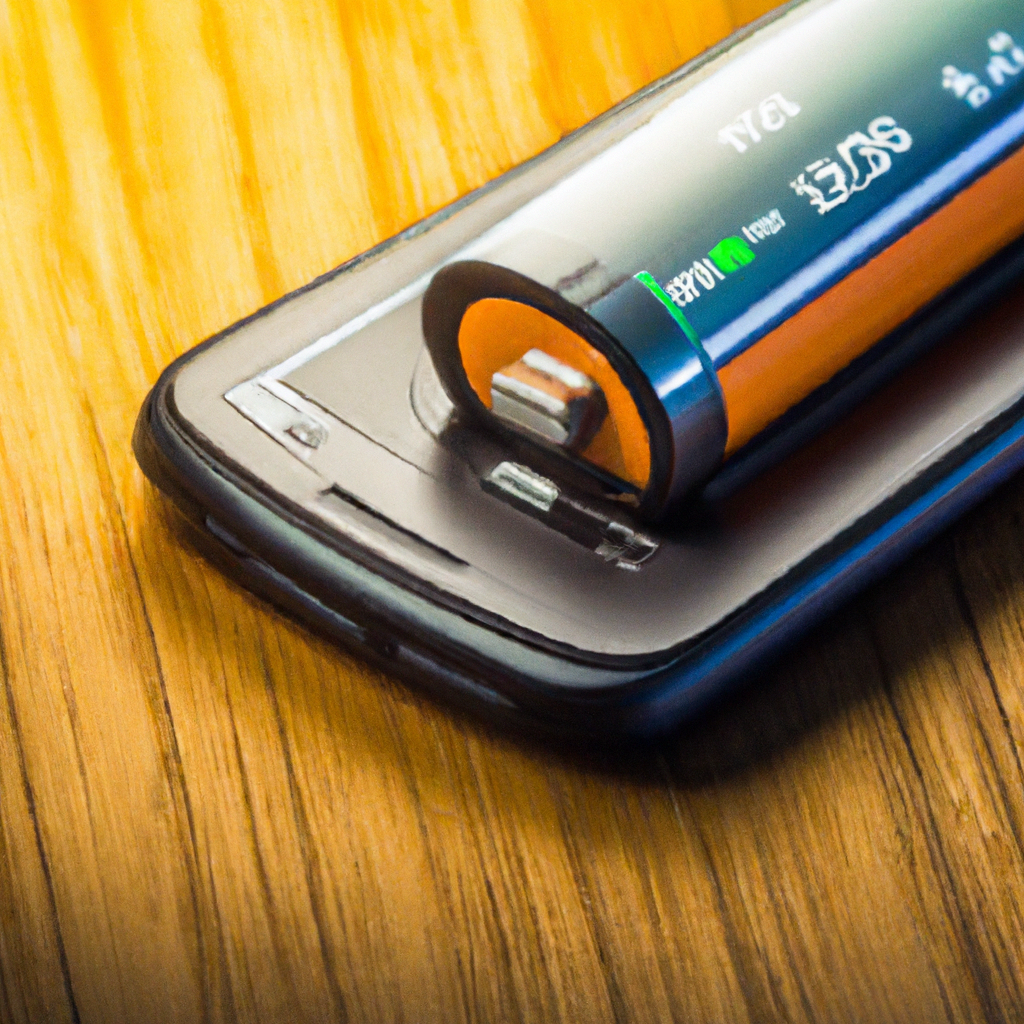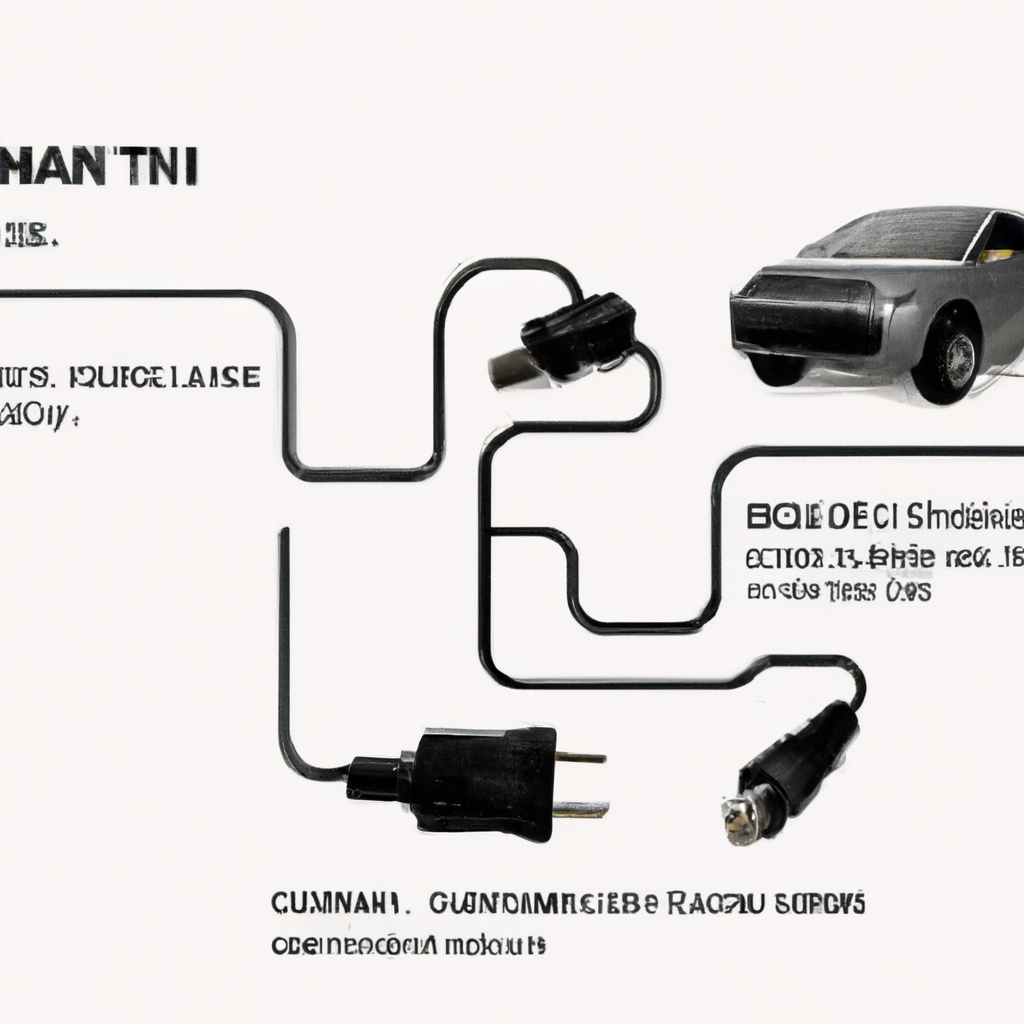
In the world of electric vehicles, finding the perfect balance between charging speed and battery health is crucial. As an EV charger expert, you understand the importance of optimizing charging time without compromising the longevity of the battery. This article will explore the factors that affect charging speed and battery health, providing you with valuable insights and tips on how to find the perfect equilibrium. By understanding the science behind charging and taking the necessary precautions, you can ensure that your EV charging experience is not only efficient but also sustainable in the long run. So let’s dive into the world of charging speed and battery health, and discover the balance that will revolutionize your electric vehicle journey.
The Importance of Charging Speed

Faster Charging Means Less Time Spent at Charging Stations
When it comes to electric vehicles (EVs), one of the most common concerns for owners is the time it takes to charge their vehicles. In our fast-paced lives, every minute counts, and spending hours waiting for your vehicle to charge at a charging station can be frustrating. This is where the importance of charging speed comes into play.
Faster charging means less time spent at charging stations. With rapid advancements in charging technology, EV owners can now enjoy significantly reduced charging times compared to the past. This means you can get back on the road quicker and spend more time doing the things you love, instead of waiting around for your vehicle to charge.
Rapid Charging Technology
Rapid charging technology has revolutionized the EV industry. It allows for significantly faster charging times, making EVs a more viable and convenient option for everyday transportation. Rapid chargers can deliver high charging power, enabling EVs to regain a substantial amount of range in a short period.
The development of rapid charging technology has been crucial in expanding the charging infrastructure and improving the overall charging experience. Now, with the availability of high-powered charging stations, you can recharge your EV quickly and efficiently, further enhancing the practicality of electric vehicles.
Benefits of Fast Charging
Fast charging offers numerous benefits to electric vehicle owners. Apart from the obvious advantage of reducing charging time, fast charging also enables longer trips and eliminates range anxiety. With quick charge capabilities, you can stop at a charging station, top up your battery, and continue your journey without extensive delays.
Moreover, fast charging can provide added convenience for those with busy schedules. Whether you need to run errands, commute to work, or embark on a road trip, fast charging ensures that your EV remains powered and ready whenever you need it. This flexibility and accessibility contribute to a positive EV ownership experience.
Effects of Fast Charging on Battery Health
Increased Temperature and Its Impact on Battery Life
While fast charging offers numerous benefits, it can also have certain adverse effects on battery health. One of the primary concerns is increased temperature. When you charge your battery at a rapid rate, it generates more heat than slower charging methods.
High temperatures can accelerate the degradation of battery cells, leading to a shortened overall lifespan. The excess heat increases the chemical reactions within the battery, causing wear and tear on its components. Over time, this can result in a decrease in battery capacity and reduced performance.
Chemical Reactions and Electrolyte Breakdown
The chemical reactions that occur during fast charging can also lead to electrolyte breakdown. Electrolytes are responsible for carrying charge within the battery, and when they break down, the battery’s ability to hold a charge diminishes. This can result in decreased range and overall battery health.
Fast charging, especially at high temperatures, can exacerbate the breakdown of electrolytes and increase the rate of battery degradation. It is essential to strike a balance between charging speed and battery health to maintain optimal performance over the long term.
Potential for Internal Damage
The rapid influx of energy during fast charging can potentially cause internal damage to the battery. The internal components of the battery, such as the electrodes and separators, may not be able to handle the increased rate of energy transfer. This can lead to physical damage within the battery and compromise its overall functionality.
To mitigate the risk of internal damage, charging speed must be carefully managed. While fast charging is convenient, it is crucial to understand the limitations and ensure that the charging rate does not exceed the recommended guidelines provided by the vehicle manufacturer or charging infrastructure provider.
Understanding Battery Degradation

Factors Affecting Battery Degradation
Battery degradation refers to the gradual loss of a battery’s capacity over time. Several factors contribute to this degradation, including the charging and discharging cycles the battery undergoes and the passage of time. Understanding these factors is essential for maintaining battery health and maximizing its lifespan.
Other factors that can impact battery degradation include temperature extremes, overcharging, and deep discharging. The way an EV owner utilizes and maintains their battery can significantly affect its longevity. By being aware of these factors, you can take proactive measures to minimize degradation and ensure optimal battery health.
Cycling and Calendar Aging
Cycling and calendar aging are the two primary mechanisms of battery degradation. Cycling refers to the number of rechargeable cycles a battery undergoes, while calendar aging refers to the natural aging process of a battery over time, regardless of usage.
Each time a battery is charged and discharged, it undergoes a cycle. The more cycles a battery goes through, the more capacity it loses over time. Additionally, even If a battery remains idle and unused, it will still experience calendar aging due to the natural chemical reactions occurring within the battery.
Managing cycling and calendar aging is crucial to prolonging battery life. By employing strategies such as avoiding frequent full discharges and maintaining an appropriate state of charge, you can minimize the impact of these aging processes and extend battery longevity.
What Determines Battery Lifespan
Battery lifespan is a multifaceted concept influenced by various factors. The overall design and quality of the battery play a significant role in determining its lifespan. Batteries with superior construction and higher-quality materials tend to have longer lifespans.
Other factors that affect battery lifespan include the manufacturer’s recommended charging practices, environmental conditions, and usage patterns. It is essential to consider these factors and adhere to the manufacturer’s guidelines to maximize your battery’s longevity and maintain optimal performance.
Optimal Charging Speed for Battery Longevity

Slow Charging for Maximum Battery Life
While fast charging offers convenience, slow charging is generally considered the best option for maximizing battery life. Slow charging refers to charging at a lower power level, which reduces heat generation and minimizes stress on the battery.
Slower charging rates allow the battery to absorb energy more efficiently and prevent excessive temperature rise. By charging at a slower pace, you reduce the risk of damaging the battery and extend its overall lifespan. Although slow charging may require more time, it offers the ideal balance between charging speed and battery health.
Balancing Battery Health and Charging Time
Finding the balance between battery health and charging time is essential for EV owners. While slow charging is preferable for long-term battery longevity, it may not always be convenient, especially when time is limited. Balancing charging speed with the need for immediate range is crucial.
It is important to gauge your daily charging needs and prioritize battery health when possible. Consider opting for slow charging whenever feasible, but also take advantage of rapid charging when time is of the essence. Striking a balance between these charging speeds can help maintain a healthy battery while accommodating your charging requirements.
Charging Speed Recommendations by Manufacturers
EV manufacturers provide charging speed recommendations to help owners optimize battery health. These recommendations take into account the specific characteristics of their vehicle’s battery chemistry and construction. It is important to consult your vehicle’s manual or reach out to the manufacturer for guidance regarding the ideal charging speeds.
By following the manufacturer’s recommendations, you can ensure that you are charging your battery in a manner that aligns with its design and capabilities. This helps maintain warranty validity and maximize the overall lifespan of your battery.
Temperature Management for Battery Health

The Relationship Between Temperature and Battery Degradation
Temperature plays a significant role in battery degradation. Excessive heat accelerates the chemical reactions within the battery, leading to increased wear and tear. On the other hand, extreme cold temperatures can reduce a battery’s ability to hold a charge and significantly impact its performance.
To maximize battery health, it is crucial to manage the temperature during charging. Avoid exposing the battery to extreme temperatures and ensure that charging is done in a controlled environment. By maintaining a moderate temperature range, you can mitigate the rate of battery degradation and preserve its overall performance.
Effective Cooling Techniques for Fast Charging
Fast charging generates more heat compared to slower charging methods. To counteract this, effective cooling techniques are essential. Charging stations equipped with cooling mechanisms can help dissipate heat and prevent overheating during the charging process.
Liquid cooling systems, air ventilation, and advanced thermal management systems are some of the techniques used to maintain optimal temperatures during fast charging. These systems help regulate the temperature within the battery and prevent excessive heat buildup, ultimately preserving battery health.
Avoiding Extreme Temperatures
Avoiding extreme temperatures is crucial for battery health. Exposure to high temperatures can cause irreversible damage to the battery cells, reducing their capacity and overall performance. Similarly, extremely cold temperatures can affect the battery’s ability to hold a charge, limiting its range and usability.
When parking your EV or storing it for an extended period, ensure that it is in a temperature-controlled environment. Extreme temperature fluctuations can also be detrimental, so it is important to avoid subjecting the battery to rapid temperature changes. By considering these factors, you can protect your battery from unnecessary stress and maintain its longevity.
Battery Management Systems (BMS)

Introduction to Battery Management Systems
Battery Management Systems (BMS) play a critical role in maintaining battery health and ensuring optimal performance. BMS is an electronic system that monitors and controls the charging and discharging of the battery. It serves as the brain of the battery, providing essential data and protection mechanisms.
BMS monitors various parameters such as voltage, current, temperature, and state of charge to optimize battery performance. It also protects the battery against overcharging, over-discharging, and excessive temperature fluctuations. A well-implemented BMS can significantly enhance battery life and contribute to a safer and more reliable charging experience.
BMS Features for Battery Longevity
Battery Management Systems incorporate several features designed to prolong battery life. One of the primary functions of a BMS is to balance the cell voltages during charging and discharging. This prevents individual cells from operating outside their optimal voltage range, preserving their health and ensuring uniform performance.
Additionally, BMS includes temperature sensors that monitor and control the temperature of the battery. By maintaining the battery within the recommended temperature range, BMS minimizes the risk of degradation caused by excessive heat or cold.
Importance of Accurate Battery Monitoring
Accurate battery monitoring is paramount for maintaining battery health. BMS provides real-time data on battery parameters, allowing users to make informed decisions regarding charging and discharging practices. It enables users to monitor the battery’s state of charge, voltage, and temperature, ensuring optimal performance and extending battery life.
By leveraging the information provided by BMS, EV owners can take proactive measures to protect their battery from degradation. The ability to accurately monitor battery health contributes to a better understanding of charging patterns and facilitates the implementation of strategies to maximize battery lifespan.
Charging Profiles and Algorithms
Smart Charging Algorithms
Smart charging algorithms are designed to optimize charging times and battery health. These algorithms analyze various factors such as battery state of charge, charging power availability, and time constraints to determine the most efficient charging profile.
Smart charging algorithms dynamically adjust the charging rate based on the battery’s needs, ensuring that it is charged at the optimal speed without compromising its health. By adapting the charging profile, these algorithms balance the need for quick charging and long-term battery durability.
Adaptive Charging Profiles
Adaptive charging profiles take into account factors such as temperature, battery age, and previous charging patterns to further personalize the charging experience. These profiles adjust charging rates based on real-time conditions and historical data, optimizing charging speed while prioritizing battery health.
By adapting to the unique characteristics of each individual battery, adaptive charging profiles ensure that charging is tailored to its specific needs. This personalized approach enhances battery longevity and maximizes overall performance.
Customizing Charging Patterns for Battery Health
EV owners have the ability to customize charging patterns to suit their needs and prioritize battery health. Many EVs come equipped with charging scheduling features that allow users to set specific charging times. This enables users to take advantage of off-peak electricity rates and ensures that charging occurs in a controlled manner.
By customizing charging patterns, you can avoid the high charging demands that often coincide with peak hours. This not only saves money but also reduces the strain on the electrical grid and promotes a more sustainable charging infrastructure.
Balancing Public Charging Needs and Battery Health
The Role of Public Charging Infrastructure
Public charging infrastructure is crucial for the widespread adoption of electric vehicles. It provides EV owners with the convenience and accessibility needed for long-distance travel and reliable daily commuting. However, the impact of public charging on battery health must be considered when utilizing these charging stations.
Public charging stations typically offer fast charging capabilities to minimize the time spent waiting. While this is advantageous for quick top-ups on the go, frequent use of high-speed public chargers can accelerate battery wear and reduce overall longevity. It is essential to strike a balance between public charging needs and preserving battery health.
Strategies for Minimizing Battery Stress at Public Chargers
To minimize battery stress when using public chargers, several strategies can be employed. First, it is advisable to avoid relying entirely on public chargers for regular charging needs. Whenever possible, charge your EV at home or work, where you can utilize slower charging methods that are less taxing on the battery.
When utilizing public chargers, be mindful of the charging speed and avoid repeated fast charging sessions. Opt for slower charging rates whenever time permits to mitigate the adverse effects of rapid charging on battery life. Being proactive about battery health while using public chargers can ensure a balanced approach to charging.
Considering Battery Health in Public Charging Station Usage
Considering battery health when utilizing public charging stations is crucial for maintaining optimal performance and longevity. While fast charging is tempting for its quick charging times, be mindful of the potential impact on your battery’s overall health.
If your driving patterns frequently require the use of public charging stations, it may be beneficial to invest in an EV with a high-capacity battery that can better withstand the rigors of rapid charging. Additionally, utilizing a combination of slower home charging and strategic public charging can help balance battery health while ensuring your charging needs are met.
Impact of Charging Speed on Different Battery Types
Lithium-Ion Batteries
Lithium-ion batteries are the most common battery type used in electric vehicles due to their high energy density and efficiency. When it comes to charging speed, lithium-ion batteries are well-suited for rapid charging.
These batteries can handle high charging rates without excessive degradation, allowing for faster charging times. However, it is important to still adhere to the recommended charging guidelines provided by the vehicle manufacturer to ensure optimal battery health and longevity.
Nickel-Metal Hydride (NiMH) Batteries
Although less commonly used in modern electric vehicles, nickel-metal hydride (NiMH) batteries are still found in some hybrid vehicles. NiMH batteries have a lower energy density compared to lithium-ion batteries, which limits their charging capabilities.
Charging NiMH batteries at high speeds can cause excessive heat buildup and increase the risk of degradation. It is recommended to charge NiMH batteries at slower rates to preserve their overall health and functionality.
Other Battery Chemistries
While lithium-ion and nickel-metal hydride batteries are the most prevalent in the EV industry, other battery chemistries exist, each with its own charging characteristics and considerations. Battery chemistries such as solid-state batteries, lithium iron phosphate (LiFePO4), and lithium polymer batteries may have different optimal charging speeds.
When utilizing these alternative battery chemistries, it is crucial to consult the manufacturer’s guidelines and recommendations. Understanding the specific requirements of your battery chemistry will ensure that you are charging your EV in a manner that maximizes its lifespan and performance.
Tips for Battery Health and Optimal Charging
Avoid Frequent Full Discharges
Frequent full discharges can significantly impact battery health, as the deep cycling places additional stress on the battery cells. To preserve battery longevity, it is advisable to avoid allowing your EV’s battery to reach extremely low states of charge regularly.
Instead, aim to keep your battery at higher states of charge and recharge it when it reaches approximately 20-30% capacity. This way, you avoid putting excessive strain on the battery while maintaining a healthy charge level.
Maintain Appropriate State of Charge
Maintaining an appropriate state of charge is essential for battery health. Both overcharging and deep discharging can have detrimental effects on battery longevity. It is important to strike a balance and keep your battery within the recommended range.
Avoid leaving your EV’s battery fully charged for extended periods, as this can increase the risk of degradation. Similarly, deep discharging should be minimized to prevent undue stress on the battery. Maintaining an optimal state of charge contributes to a longer battery lifespan and improved overall performance.
Implement Scheduled Charging
Implementing a scheduled charging routine can help maintain battery health and optimize charging performance. By charging your EV at predictable times, you can take advantage of off-peak electricity rates and reduced strain on the electrical grid.
Scheduled charging also allows you to manage the battery’s state of charge and avoid extreme levels that can impact longevity. By implementing a charging schedule that aligns with your daily routine, you can ensure that your EV is always ready to go while prioritizing battery health.
In conclusion, finding the right balance between charging speed and battery health is crucial for electric vehicle owners. While fast charging provides convenience and flexibility, it can also affect the overall lifespan and performance of the battery. Understanding the impact of charging speed on battery health, implementing optimal charging practices, and considering the specific needs of your battery type are essential for maximizing battery longevity. By prioritizing battery health and implementing strategies to mitigate degradation, you can enjoy the benefits of electric driving while ensuring the long-term reliability of your vehicle’s battery.
RELATED POSTS
View all


